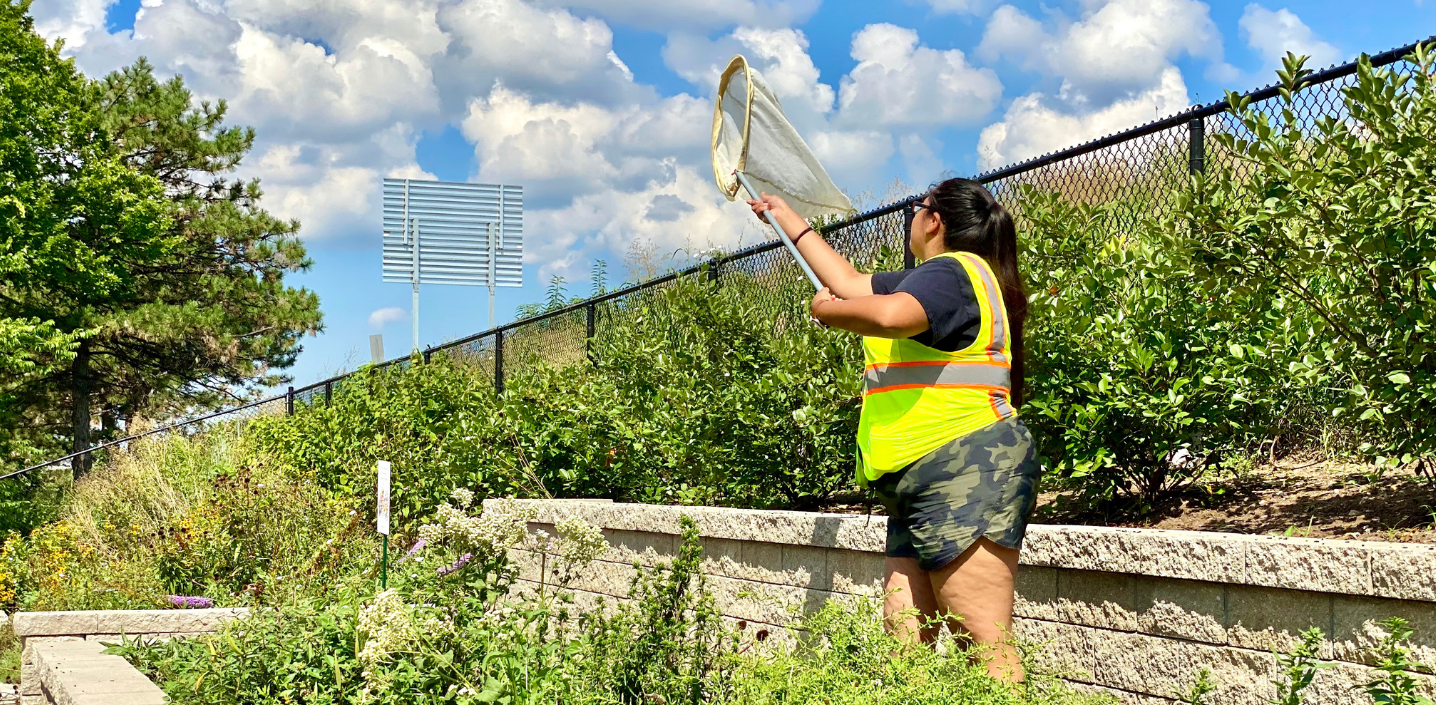
The Buzz about Pollinator Study on the GHV Embankment Greenway
From the outset of our work with the Green House Venture, one of our top priorities has been to study ways to revitalize declining pollinator populations that are so vital for large-scale agriculture.
In May of this year, one of the Venture’s partners, Saint Louis University, launched a research project to learn how differences in the vegetation of the Embankment Greenway and Terrace Garden affect the extent and diversity of the bee population in the two areas.
Sampling bees requires extensive preparation before researchers go into the field, followed by significant lab work after the bees are collected. Since bees are fussy about the weather, collection is only done on favorable days when it’s not cloudy, windy or rainy.
Before collection of the bees began, researchers took pictures of all the plants across the entire Embankment Greenway, including the section developed specifically for the Terrace Garden. Those photos are to be used later when they compare the species of bees and plants between the two areas.
Since the Terrace Garden contains mostly crop plants while the rest of the Embankment is planted with native flowers, the bees from the two areas are kept separate throughout the project to ensure the integrity of the research. After the bees are collected, they are brought to a lab where they are sorted, mounted and labeled. As of now, over 300 specimens have been collected.
Leading the research project is T’ea Ten Eyck, a senior at Saint Louis University, majoring in biology with an emphasis on ecology and conservation. According to T’ea, “The GHV embankment represents a great opportunity to demonstrate that with relatively little effort we can change the vegetation patterns and that will lead to increases in our native bee diversity. This is true biodiversity conservation in action.”
So far, the research team has identified about 25 native bee species, including three different types of bumblebees, various sweat bees and leaf-cutter bees. “We are still collecting data and have not performed any analyses,” said T’ea. “We will have a much better idea after we conclude the sampling in the fall.”
T’ea and her team, Amy Cook, Pavel Borovik and Brigid Tunney are conducting the research study under the supervision of Dr. Gerardo R. Camilo, a professor at Saint Louis University, and one of the world’s leading authorities on bee pollination.
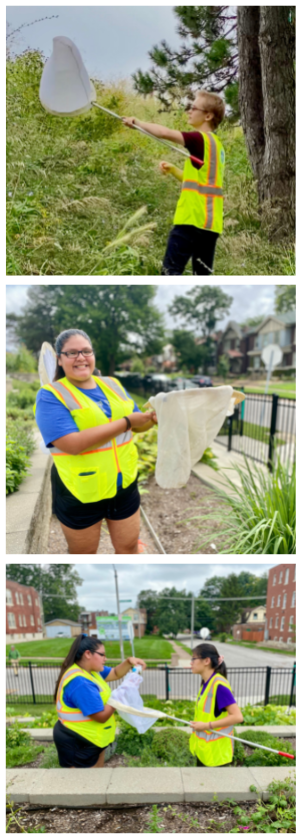
The Saint Louis Zoo & Coahoma Orchards Partner on the GHV Terrace Garden
Among the rich and varied contributions that Native American cultures have made to our country, none are more vital than their remarkable array of plants, foods and agricultural traditions that sustain us yet today.
In keeping with our mission to cultivate diversity, the Green House Venture invited a local descendant of the Choctaw Nation, working in collaboration with a member of the Saint Louis Zoo, to plant a number of notable native staples on the Terrace Garden of the GHV Campus earlier this year.
Participating in the project were Ed Spevak, who is the Director of the Center for Native Pollinator Conservation with the Saint Louis Zoo; and Dail Chambers, who serves as a steward of Coahoma Orchards located in North St. Louis, which is dedicated to Native American plantings and agriculture.
As Dail explains, this project has given her a sounding board for her long-term goals and the opportunity to share her passion with others. “It’s so beautiful to see the seeds that my daughter, Ed and I planted grow throughout the season,” Dail says. “The Terrace Garden is a small demonstration of how I hope to see all of our neighbors and relatives work with native food.”
The purpose of the Native American terrace is to introduce students and others to food and medicinal and sacred plants that have been used historically in native cultures. This year, the group planted Cherokee glass gem corn, Cherokee Trail of Tears beans, Cherokee bush pumpkin, Arikara sunflower and white sage. Depending on the particular culture, white sage was used in a variety of ways for healing and calming, making bad spirits sick, and purifying people and dwellings.
The Native American project illustrates traditional methods of planting like the “Three Sisters,” which include maize (corn), beans and squash. “This intercropping method emphasizes the inter-relationship between plants and all beings,” explains Ed. “The Three Sisters support each other with the corn’s structure supporting the growth of beans, with beans providing additional nitrogen to the soil for corn and squash, and squash providing weed control and retaining soil moisture with its large leaves.”
Occasionally a fourth sister is added in the form of sunflowers, which are included in our Terrace Garden display. They serve mainly as a source of protection for the other sisters, providing a barrier from wind, attracting pollinators, and luring birds away from the corn with their seeds. They also provide an additional food source.
According to Ed, “the distinctive combination of corn, beans and squash delivers a complete diet which each crop cannot supply on its own.” What’s more, studies have shown that the intercropping of the Three Sisters feeds more people per acre than any one of them grown alone as a monoculture.
This project has been a notable success in a number of ways. “Working with Green House Venture has been a wonderful way to educate students about the rich indigenous heritage of agriculture in North America, and to express the thanks we owe to the First Nations who lived here and supplied us with about 60 percent of our current diet from the foods that originated here,” says Ed. “It is also a way to teach people about traditional methods of growing that could help feed a hungry world.”
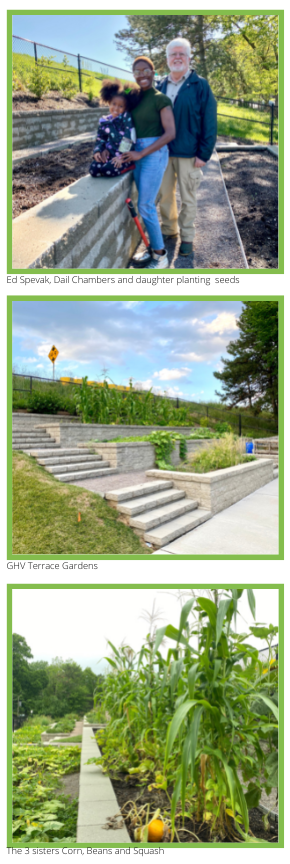
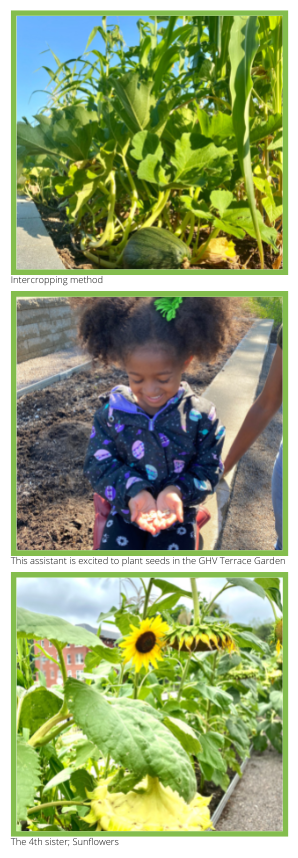
The Power of Computerized Growing Chambers
by Donald Stump, Curriculum Director
It’s a challenge to use experiments, as the Venture does, to excite elementary-school students about science. One is always building new apparatus.
Our need, then, has long been for a highly versatile piece of growing apparatus that can be used, not for just one or two experiments, but for many. The problem is to develop a platform that allows a wide range of variables to be isolated for study in accordance with the scientific method. The solution, we decided in 2017, is a computerized growing chamber.
So-called “food computers” have attracted a good deal of recent media attention as processors for large-scale indoor farms, where lighting, watering, temperature, and nutrients are controlled to maximize productivity and quality. A few home units that can fit in a kitchen are also appearing. What has not appeared, however, are powerful, affordable classroom chambers. That is where we come in.
Using technology first developed by the MIT Media Lab, the Venture has for five years been working to satisfy our own need for such a platform. Large enough to accommodate side-by-side experiments in several growing systems (soil-based, hydroponic, and aquaponic), the unit must also be small enough to stand on a counter at the back of a classroom. Phil Speth, our inventive engineer and designer, initially made such a chamber using common materials and circuits driven by a low-cost, easily programmed Raspberry Pi computer to control a temperature sensor, fans, lights, a camera, and other accessories.
While testing this Phase 1 unit in our Ambassadors After-School program in 2018-20, we received funding from a local professional baseball charity, Cardinal Care, to install versions of it in the four schools that are our partners in the Urban Education Alliance.
Though Covid has so far prevented us from introducing new teachers to the equipment in our new Classroom Outreach Program, we hope to begin soon, helping them to set up and conduct their first computer-assisted growing experiments.
With construction of the Venture’s $4 million Education Center on the horizon, our next priority is to develop more powerful Phase 2 units. With the assistance of Prof. Sanjiv Bhatia, Professor of Computer Science at the University of Missouri St. Louis and member of the GHV Board of Directors, we are now seeking an intern to work with Phil Speth to reprogram current units and bring them back into service. We are also seeking a Raspberry Pi designer and programmer to develop a Phase 2 prototype able to turn lights of key colors on and off at pre-set times; control temperature, air flow, and watering; dose plants with precise amounts of individual nutrients; and control multiple cameras to monitor experiments remotely, sharing images with students, parents, and others interested in the project.
Using Phase 2 technology, teachers have many options. One might introduce the topic of flowering by designing an experiment around the effects of nitrates. Using the Raspberry Pi to inject different doses of that key nutrient into two growing trays, students could then collect data on the time of flowering and the number and quality of blossoms in each tray. Another teacher might place two aquariums in the chamber, each with rafts containing mesh growing pots floating on the surface. Plants grown with their roots immersed in an artificial and soon depleted hydroponics solution could then be compared with those in the nutrient-rich water of a more natural and regenerating aquaponic system. A third teacher might compare plants grown in soil rich or poor in compost. The possibilities are endless.
As Phase 2 goes forward, we are already thinking ahead to Phase 3, which will involve Cloud applications and Internet collaborations between schools. But that is a story for another day.
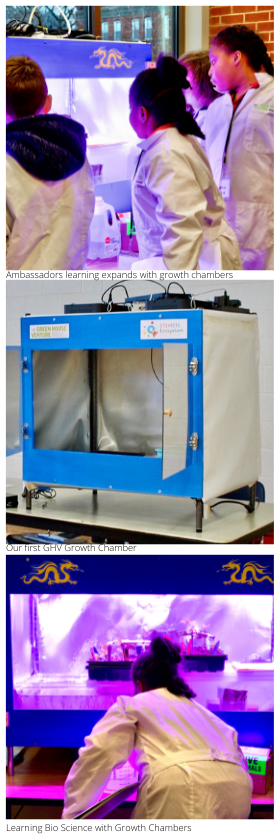
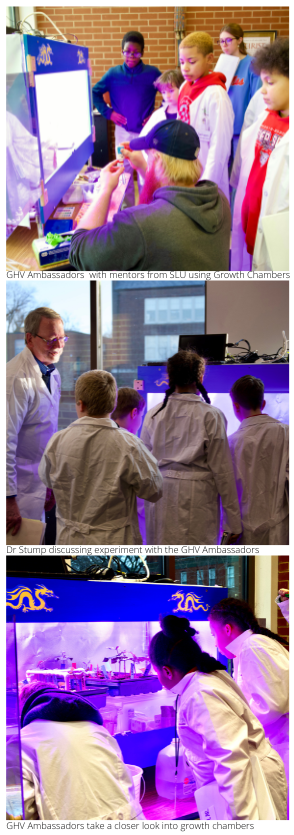
Jr High Mission Trip group on the GHV Embankment Greenway
This summer the GHV was fortunate enough to host fourteen junior high youth and four adults from Fourth Presbyterian Church in Chicago. The group spent a week in St. Louis for their summer mission trip. “While we were there, we had the good fortune to of partnering with Green House Venture for the morning,” says Katie Patterson, Youth Ministry Program Manager.
The group volunteered to clean up Embankment Greenway, Entry gardens and Terrace Gardens as part of their service work during the summer. “Thanks for letting us learn about The Green House Venture. We had a great time,” said the kids. In return we want to say THANK YOU for all your help in cleaning up our GHV Embankment Greenway!
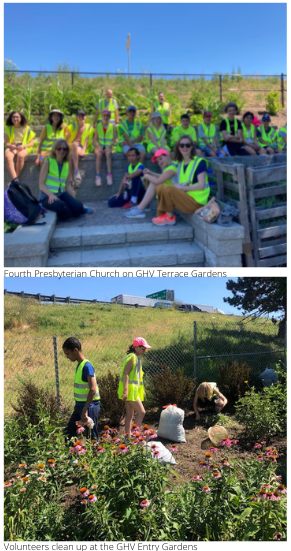
UPDATED GHV WEBSITE
Have you heard the news or perhaps clicked on our website and noticed something a little different?
Indeed you did! We have spent some much needed time on updating our website.

Growing Forward Update
By: Dan Reynolds
The campaign for the new Education Center continues to move forward. We are grateful for the enthusiasm that people have for this project and the momentum that is building for the capital campaign. The campaign committee members continue to reach out to potential supporters of this project. We appreciate the interest in this initiative and the warm reception that this campaign is receiving. If you or someone you know is interested in a tour of the site, please contact Dan Reynolds @ 314-308-8038 or email: dreynolds@holmesradford.com to arrange meeting.
Donors understand that the GHV has moved beyond start-up mode. With the success of the thriving Embankment Greenway / Terrace Garden, the GHV has proven that it has the dedicated volunteers, generous donors, credibility, and traction to be successful over time. We are excited and poised to complete the campus vision with the construction of Phase II, the New Education Center.
- Over $1 million has provided significant momentum for our $6 million campaign goal.
- An additional $800,000 from over twenty-six different donors has already been raised to develop the first phase of the GHV Campus, including two entry gardens, the 3.5 acre I-44 Embankment Garden/Terrace Garden, and the development of several years of curriculum programs for the Urban Education Alliance.
- We are also hopeful about our plans to pursue a major matching challenge grant from the Mabee Foundation, which would bring money to this project from outside of St. Louis.
The GHV’s science learning facility will advance innovative, hands-on curriculum among Urban Education Alliance members and the larger community. This centerpiece of the campus will feature both indoor and outdoor growing spaces, fish cultivation with aquaponic tanks and food computers. It will also include advanced technology that will enable us to scale our impact with a broadcast center to telecast our curriculum, sharing knowledge of science, nutrition and dietetics, and urban agriculture with schools throughout the region. This facility is an essential next step in fulfilling our mission to educate, excite, and equip an inclusive population of elementary students to pursue a sustainable world through a hands-on program in bioscience and urban agriculture.

